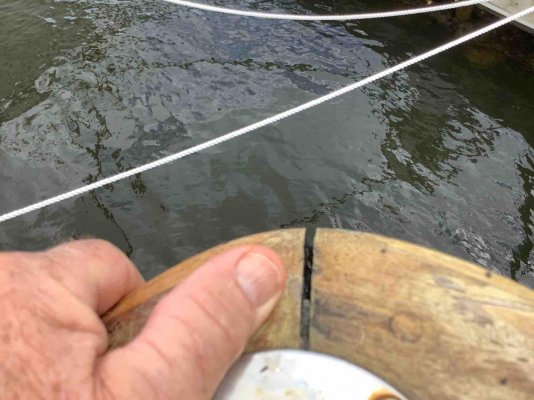Maerin
Guru
My teak cap rails are due for wooding and refinish. I have a few scarf joints that have opened over the years. I've tried cleaning the edges and filling the joint with liquid polysulfide caulk. I varnish over it and it seems to last a couple of years, but it still cracks, water ingress, downhill from there. Repair at refresh time becomes almost impossible.
This time I'm using Awlwood, and I'm contemplating using West System GFlex thickened epoxy to prep the spreading scarf joints. I can tint it to match, or black, but wondering if anyone has used it on a scarf joint and could offer any tips.
This time I'm using Awlwood, and I'm contemplating using West System GFlex thickened epoxy to prep the spreading scarf joints. I can tint it to match, or black, but wondering if anyone has used it on a scarf joint and could offer any tips.

